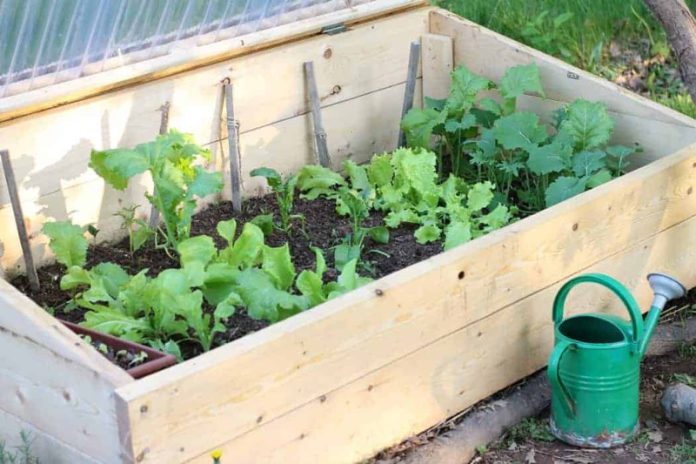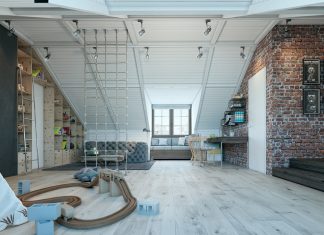Gardeners are constantly seeking ways to lengthen their growing season, and employing cold frames for raised beds is one successful method. Cold frames provide a regulated atmosphere that protects plants from harsh weather, allowing them to thrive even during the lower months. In this blog post, we will look at the advantages of using cold frames for raised beds, their construction and design, and practical recommendations for making the most of this gardening practice.
The Benefits of Cold Frames
Gardeners can profit from cold frames in various ways, including extending the growing season and protecting plants from harsh weather. Here are some of the primary advantages of using cold frames:
Extending the Growing Season
Lengthening the growing season is one of the critical benefits of cold frames. Cold frames produce a microclimate that protects plants from freezing temperatures, frost, and other severe weather conditions by providing a controlled environment. Gardeners can now begin planting earlier in the spring and continue growing food well into the fall, essentially extending the productive season of their gardens.
Protecting Plants from Harsh Weather
Cold frames are a physical barrier, shielding plants from high winds, heavy rains, and snowfall. This safeguard is especially important for delicate or frost-sensitive plants that may perish if exposed to severe weather. Cold frames help to maintain more constant temperatures, limit moisture swings, and reduce the impact of external elements on plant health by creating a covered environment.
Creating a Microclimate
Cold frames produce a distinct microclimate that has various benefits. They absorb solar heat, generating a warmer climate inside the frame than the surrounding external temperature. This warmth encourages plants to grow and thrive even when temperatures drop outside. Furthermore, the enclosed compartment aids in moisture retention, reducing the need for frequent watering and lowering the risk of drought stress.
Versatility in Plant Selection
Cold frames are appropriate for various plants, including vegetables, herbs, flowers, and certain perennials. Gardeners can experiment with different crops and broaden their gardening options because of this versatility. Cold-hardy vegetables like lettuce, spinach, kale, and radishes are ideal for cold-frame growth.
Cost-Effective Solution
Compared to building a full-scale greenhouse, cold frames are a more cost-effective option for gardeners. They require less material, space, and resources, making them more affordable to budget-conscious gardeners. Cold frames can be built from several reused materials, such as old windows or reclaimed wood, lowering the overall installation cost.
Easy Access and Maintenance
Cold frames have a hinged lid allowing easy access to the plants for watering, harvesting, and regular maintenance. This ease of access simplifies gardening duties and makes caring for the plants within the frame more convenient. Furthermore, because cold frames are self-contained machines that require little intervention once set up, they require less maintenance.
Design and Construction of Cold Frames
Choosing the Location
Choose a location that receives the most sunlight throughout the day and is protected from high winds. Areas facing south are great for capturing the most sunlight.
Frame Materials
Cold frames can be made from various materials, including wood, metal, and even reused materials, such as old windows. Because of its insulating capabilities, wood is a popular choice.
Frame Design
The frame should be strong and at least 12 inches tall to accommodate plant growth. Sloping the frame to the south allows more sunshine to enter. Check for a hinged lid on the frame for easy access and ventilation.
Glazing Materials
Clear materials like glass or polycarbonate panels are typically used for the lid to let sunlight enter. To avoid heat loss, ensure that the glazing material is securely fastened.
Maximizing the Potential of Cold Frames
Consider the following strategies to make the most of your cold frames and optimize their potential:
Timing and Plant Selection
- Start Planting Early: Take advantage of the cold frame’s sheltered environment by beginning seeds or planting seedlings earlier than in an open garden. This enables a longer growing season.
- Choose Cold-Hardy Plants: Select plant kinds that can withstand colder temperatures. Cold-tolerant vegetables like kale, spinach, lettuce, radishes, and carrots are ideal for cold-frame gardening.
- Succession Planting: Plan your crops and space them out to achieve a consistent harvest throughout the season.
Temperature Control
- Ventilation: Cold frames can get too heated during bright days, especially in the spring. Prop open the lid or offer movable vents to allow airflow to prevent overheating. This aids in temperature regulation and keeps the plants from wilting or becoming damaged.
- Closing The Lid: To keep warm and protect plants from low temperatures, close the lid at night or on colder days.
Watering and Irrigation
- Monitor Moisture Levels: Water the plants as needed after regularly checking the soil moisture level. While a cold frame’s confined environment prevents water loss, be sure the soil does not grow saturated. Proper drainage is critical for avoiding root rot and other water-related problems.
- Watering Frequency: Adjust your watering schedule based on the moisture requirements of the plants and the weather. Remember that plants in a controlled area may require less regular watering than plants in an open landscape.
Pest and Disease Management
- Regular Inspection: Despite the protection provided by cold frames, pests and diseases can still be a problem. Inspect your plants regularly for symptoms of pests or diseases, and take necessary action to manage them as soon as possible.
- Integrated Pest Management (IPM): Use IPM practices to efficiently manage pests and maintain a healthy garden environment, such as using organic pest control methods, crop rotation, and boosting beneficial insects.
Crop Rotation and Soil Health
- Rotate Crops: Avoid planting the same crops in the same location year after year. Crop rotation reduces the accumulation of pests and illnesses unique to certain plants and promotes general soil health.
- Soil Fertility: Feed the soil in your cold frames with compost or well-rotted manure regularly. This restores nutrients and maintains soil fertility, allowing for healthy plant growth.
Wrapping Up
Cold frames for raised beds extend the growing season while protecting plants from inclement weather. Gardeners can enjoy a greater choice of crops and continue their gardening efforts throughout the year by creating a controlled microclimate. Cold frames can considerably improve your gardening experience with careful planning and construction, as well as proper plant selection and upkeep. Consider incorporating cold frames into your raised bed layout, whether you’re a seasoned gardener or a newbie, to unleash the full potential of your garden and reap the benefits of an extended growing season.














